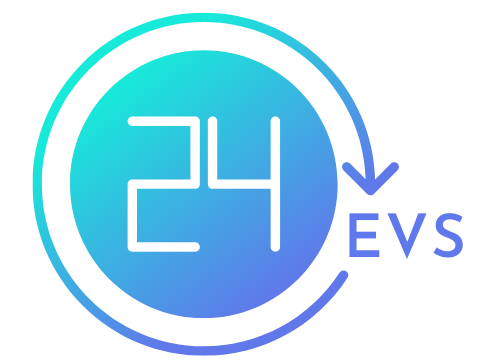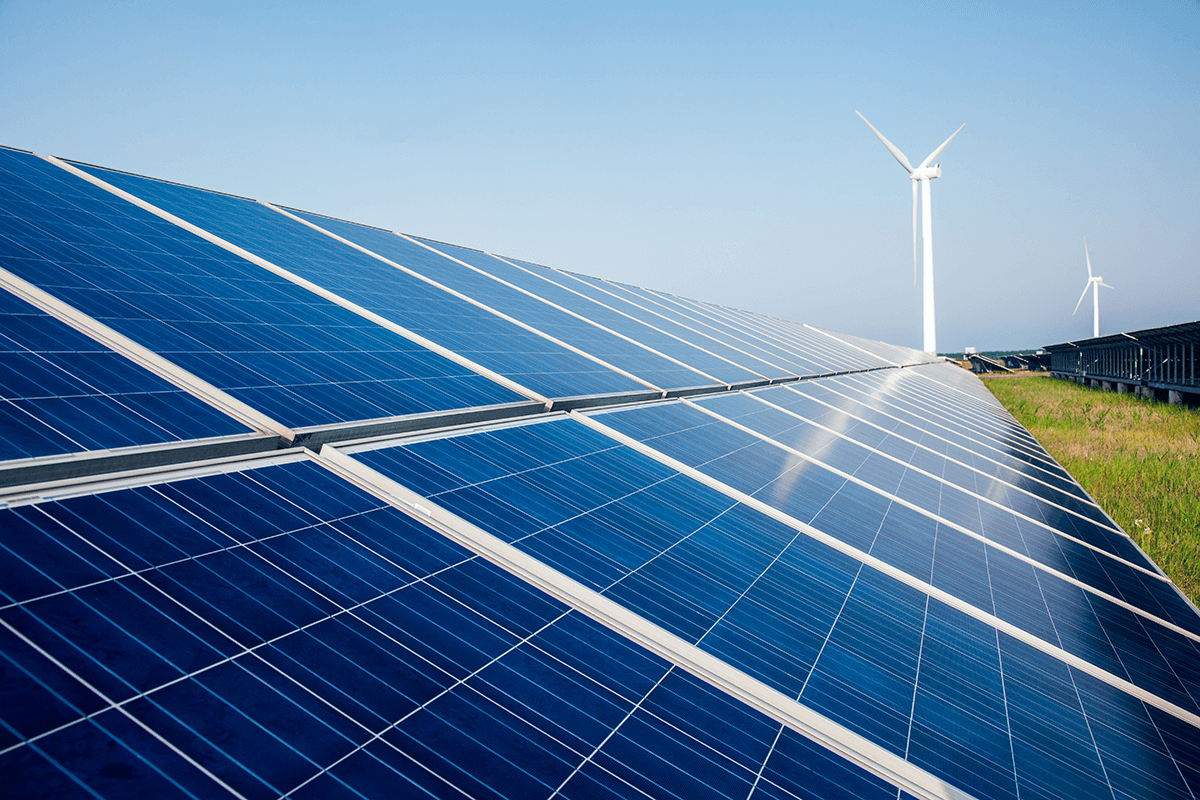The most common myths have stopped people from realizing how accessible, efficient, and durable solar energy really is. People heard all kinds of things: it’s too expensive, it doesn’t work unless it’s sunny, it won’t last. These myths lingered, discouraging many from exploring a power source that could change how they live.
The idea that it only works in perfect weather, or that it requires constant upkeep, keeps many from realizing the true potential of solar. Myths, once believed without question, have held back progress.
But today, we’re here to cut through the confusion and reveal the truth. Here are the most common myths debunked with facts.
- Only Work in Sunny Climates
- Don’t Work in Cold Weather
- Too Expensive
- Won’t Last Long
- Can Eliminate Electricity Bills Entirely
- Bad for the Environment
- Fragile
- Will Lower Property Values
- Require Constant Maintenance
- Are Unattractive
- Don’t Work at Night
- Aren’t Efficient Enough to Justify the Investment
1. Myth 1 – They Only Work in Sunny Climates
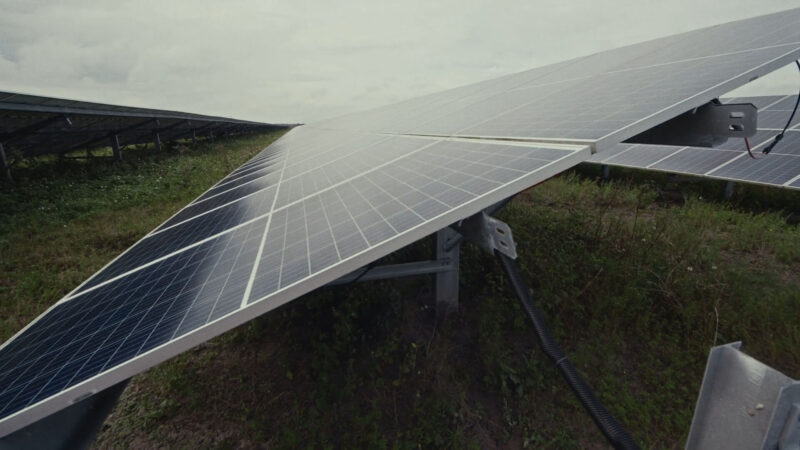
Many believe that overcast or cold climates aren’t suitable for solar energy. However, scientific studies and real-world examples show that solar energy systems function in a wide range of weather conditions, including cloudy days and colder temperatures.
- Solar panels work in all climates, including cloudy and cold regions.
- Cold temperatures improve efficiency because they reduce heat-related performance loss.
- Countries like Germany and regions like Alaska demonstrate that solar energy works well, even with less direct sunlight.
Facts Says Quite the Opposite
Solar panels rely on light, not heat, to generate electricity. Photovoltaic (PV) cells inside the panels convert sunlight into energy, and they can do so even on cloudy days. While direct sunlight increases efficiency, panels can still produce 10-25% of their output on overcast days.
As Danial Hadizadeh explains in his article on Forbes, Cold temperatures can actually improve performance, as heat can reduce efficiency. In cooler conditions, the conductivity of solar cells improves, leading to better energy production.
Cold Weather and Cloudy Conditions
Solar panels often work more efficiently in colder climates. High heat tends to reduce the overall performance of the panels, making cool but sunny days ideal for maximum energy production.
In colder regions like Alaska or northern Europe, solar energy systems can often outperform those in hotter environments due to the increased efficiency provided by the cold.
Germany
A report from Reuters states that “At 1 p.m. on May 13, 2024, Germany’s solar power production reached an impressive 43.8 gigawatts, accounting for nearly two-thirds of the total electricity generated in the country during that hour.”
Alaska
Solar installations in Alaska continue to grow, with the state seeing significant success in both residential and commercial solar energy production.
The long summer days with extended sunlight help make up for the darker winters, proving that solar can still be effective in colder, less sunny regions.
Myth 2 – They Don’t Work in Cold Weather
Many believe that only hot, sunny regions can truly benefit from solar power, which has also been debunked many times.
- Solar panels thrive in cold climates, benefiting from lower temperatures that boost efficiency.
- Snow does not stop solar energy production and can even enhance it in some cases.
- Countries with cold climates, such as Sweden and Canada, have demonstrated that solar energy remains a viable and effective power source.
Efficiency in Cold Climates
Solar panels generate energy from light, not heat. In fact, cold temperatures often enhance the performance of solar panels. When photovoltaic cells absorb sunlight, they convert it into electricity. High heat can actually lower this conversion efficiency. In cold weather, solar cells operate more efficiently, producing more energy from the same amount of sunlight.
This is why areas with cool temperatures and clear skies, like certain regions in northern Europe, often see excellent solar energy output. When panels stay cool, they maintain higher performance levels, especially during sunny winter days.
Performance in Snowy Conditions
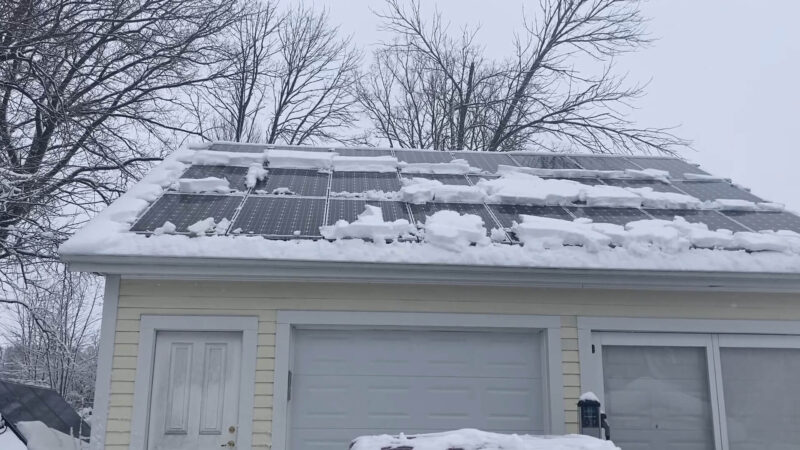
Although heavy snow can cover panels temporarily, the smooth surface helps snow slide off once it begins to melt. Additionally, they are designed to handle such conditions and are often installed at angles suitable for snow shedding.
Sweden and Norway
Despite their cold, snowy climates, both countries have seen success with solar energy. In fact, during their long daylight hours in winter months, solar systems can continue generating substantial amounts of electricity.
Canada
Solar installations in provinces like Ontario and Alberta prove that solar energy can be reliable and productive in regions with freezing temperatures. These installations contribute significantly to energy grids during cold months.
Myth 3 – It is Too Expensive
The perception that solar energy is too expensive no longer holds true, thanks to significant price drops and the availability of various financial incentives.
- Solar panel prices have dropped by more than 80% in the last decade, making solar energy more accessible.
- Federal, state, and local incentives, as well as financing options, make solar systems more affordable than ever.
- The average payback period for a solar system is between 5 to 10 years, after which homeowners enjoy substantial savings on energy costs.
The Real Costs
Over the last decade, the price of solar panels has decreased by over 80%. The average cost of installing a residential solar system has dropped significantly, making solar far more affordable for homeowners.
While installation costs can vary based on location and system size, the average cost in the United States ranges between $15,000 and $25,000.
Financial Incentives
Several government incentives make solar even more affordable. Federal tax credits, state-level rebates, and local incentives can significantly reduce the initial cost.
For example, the federal Investment Tax Credit (ITC) allows homeowners to deduct 30% of the cost of their solar system from their taxes.
In many cases, homeowners can also access zero-down financing options such as solar loans, leases, or power purchase agreements (PPAs), further reducing the burden of upfront costs.
Long-Term Savings and Return on Investment
Although the initial cost may seem high, solar energy offers long-term savings. On average, homeowners who install solar panels can save between $10,000 and $30,000 over the system’s lifetime.
California
Many have reported paying off their solar systems within 6-7 years, enjoying decades of virtually free electricity afterward.
Florida
Homeowners are saving up to 50% on their energy bills annually, highlighting the financial benefits of solar even in less costly energy markets.
Myth 4 – They Don’t Last Long
Solar panels are built to last for decades with minimal maintenance.
- Solar panels typically last 25-30 years, retaining at least 80% of their original output.
- Built to withstand harsh weather conditions, solar panels are durable and low-maintenance.
- Long-standing installations in countries like Australia and Germany prove that solar panels remain reliable for decades.
Average Lifespan
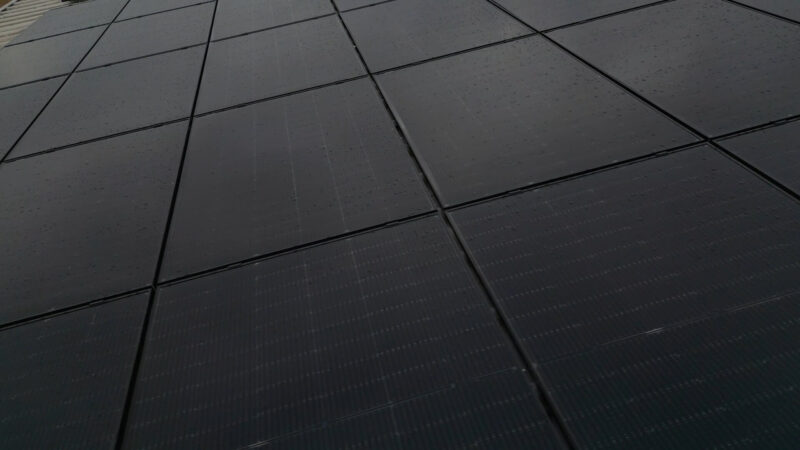
Solar panels come with an expected lifespan of 25-30 years. Even after decades of use, most panels still generate 80% or more of their original output. The warranties provided by manufacturers often guarantee this performance, with many offering 25-year performance warranties.
In many cases, panels continue to function well beyond their warranty periods, still providing valuable energy for homes and businesses.
Durability and Low Maintenance
They are tested to handle hail impact and are certified to endure winds of up to 140 mph. In terms of maintenance, solar panels require little attention. Occasional cleaning to remove dust or debris can help maintain efficiency, but for the most part, they operate independently without the need for frequent servicing.
Australia
Some of the earliest solar installations from the 1980s are still operational. Despite exposure to harsh weather conditions, these systems continue to produce clean energy, showcasing the incredible durability of solar technology.
Germany
German homes equipped with solar panels for over two decades have reported minimal degradation in performance.
Myth 5 – They Can Eliminate Electricity Bills Entirely
Solar panels can significantly reduce energy costs, but expecting zero bills is unrealistic for most homeowners.
- Total elimination is rare due to factors like nighttime energy use and grid connection fees.
- Net metering allows homeowners to earn credits for excess solar energy, helping to offset energy costs.
- Battery storage can further reduce reliance on the grid, but going completely off-grid is uncommon.
How Solar Panels Reduce (But Don’t Eliminate) Energy Bills
Most residential solar systems are designed to cover a portion of energy needs, and many homes remain connected to the grid.
When a solar system produces more electricity than the home consumes, the excess energy is sent to the grid, and homeowners receive credits toward their utility bills. However, this doesn’t always reduce bills to zero, as there are often minimum grid connection fees that homeowners still need to pay.
To reduce dependency on the grid, some homeowners install battery storage systems alongside their solar panels. While this can reduce reliance on the grid even further, completely going off-grid requires careful energy management, significant battery storage capacity, and sometimes backup systems.
This setup, while achievable, is not common in typical residential installations due to the cost and complexity of managing energy use 24/7.
Hawaii
With some of the highest electricity rates in the U.S., Hawaii residents have turned to solar energy in large numbers. While solar systems here can offset up to 100% of energy use for some homeowners, most still rely on the grid for occasional power, especially at night.
The overall savings, however, are substantial, with some homeowners reducing their bills by up to 80%.
Arizona
In sunny states like Arizona, where net metering policies are favorable, many homeowners see a drastic reduction in their electricity bills.
Although complete bill elimination is rare, solar users can often reduce their costs by more than half during peak sunlight months.
Myth 6 – They Are Bad for the Environment
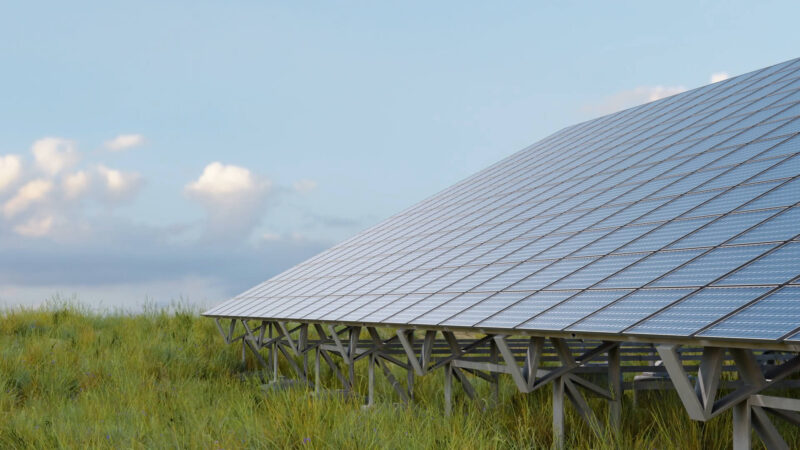
Some people believe that solar panels are harmful to the environment, particularly due to the energy-intensive manufacturing process and concerns about disposal at the end of their lifespan. However, when considering the entire lifecycle of solar panels, the environmental benefits far outweigh the initial impact of production.
- The energy used to manufacture solar panels is typically offset within two to three years of clean energy production.
- Most of materials can be recycled, and recycling programs are growing worldwide.
- Solar power significantly reduces carbon emissions, contributing to cleaner air and a healthier environment.
Manufacturing and Lifecycle
It is true that manufacturing solar panels requires energy and raw materials, but the environmental cost of producing solar panels is significantly lower than that of fossil fuel-based energy sources.
Studies show that the energy required to manufacture a solar panel is paid back within two to three years of its operation through clean energy production. After that point, every kilowatt-hour of energy the panel generates is emissions-free.
Disposal and Recycling
There has been growing concern about what happens to solar panels at the end of their 25-30 years lifespan. The good news is that the materials in solar panels, including glass, aluminum, and silicon, can be recycled.
Recycling programs are becoming more widespread, and many solar panel manufacturers offer take-back programs to ensure responsible disposal. Some organizations are even developing methods to recycle up to 95% of a solar panel’s materials, making solar energy increasingly sustainable.
Positive Environmental Impact
Unlike fossil fuels, solar energy production emits no greenhouse gases, making it one of the cleanest energy sources available. The more widespread the adoption of solar power, the greater the reduction in harmful emissions.
In fact, the International Energy Agency (IEA) estimates that solar energy could prevent the emission of billions of tons of CO2 each year as it replaces fossil fuel-based energy sources.
California
By 2020, the state reported that solar energy had reduced CO2 emissions by millions of metric tons annually, contributing to cleaner air and a healthier environment.
India
Massive solar farms in rural areas are providing renewable energy to millions of people, reducing the country’s reliance on coal and preventing significant amounts of pollution.
Myth 7 – They Are Fragile
Some believe that solar panels are too fragile and easily damaged by weather conditions like hail, heavy rain, or snow. But in reality, solar panels are built to be durable and can withstand a wide range of harsh conditions.
- As we mentioned earlier, panels are tested to withstand extreme weather conditions, including hail, heavy snow, and strong winds.
- Proven durability in real-world conditions shows that panels are far more resilient than commonly believed.
- Solar panels require minimal maintenance and typically come with warranties of 25 years or more, ensuring long-term performance.
Most solar panels are certified to withstand wind speeds equivalent to a Category 4 hurricane and are tested to endure hailstones up to the size of golf balls falling at high velocity.
Examples
Colorado
Solar arrays across the state, including those in the Denver area, have experienced major hailstorms with minimal damage. In most cases, while homes may have sustained roof damage, the solar panels remained intact, proving their resilience.
Australia
Despite high temperatures and occasional severe storms, the panels have maintained high performance and durability, demonstrating that modern solar technology can withstand the toughest climates.
Myth 8 – They Will Lower Property Values
Data shows that the opposite is true. Solar panels often increase property values and appeal to environmentally conscious buyers.
- Homes with solar panels typically sell for a higher price than homes without, adding value to the property.
- Solar energy systems appeal to buyers interested in energy efficiency and cost savings.
- Studies show that homes with solar installations are more attractive in competitive housing markets, especially in regions with high energy costs.
It Actually Adds Value
Numerous studies have found that homes with solar panels tend to sell for more than comparable homes without them. Buyers are increasingly aware of the long-term cost savings associated with solar energy, and they see homes with solar panels as more energy-efficient and future-proof.
A report by Zillow found that homes with solar energy systems sell for an average of 4.1% more than homes without solar.
Energy Efficiency Attracts Buyers
Solar-powered homes provide not only energy cost savings but also a sense of energy independence, which is highly attractive in markets where electricity rates are volatile.
Homebuyers are increasingly looking for properties that are eco-friendly, and solar panels are seen as a modern, sustainable upgrade.
Myth 9 – Require Constant Maintenance
The persistent myth is that solar panels require regular upkeep and maintenance, making them inconvenient for the average homeowner. In reality, solar energy systems are designed to be low-maintenance and durable.
- Solar systems are designed to be low-maintenance, with occasional cleaning being the most common task.
- Most systems come with warranties guaranteeing 25-30 years of performance with minimal upkeep.
Minimal Maintenance
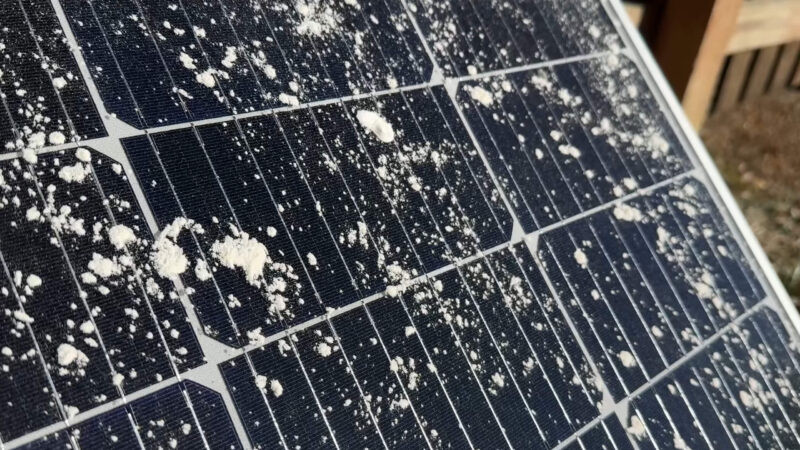
We were already explaining that these systems require little or no maintenance. Once installed, they operate with little to no intervention. Typically, the only maintenance required is occasional cleaning to remove dirt, leaves, or snow that might accumulate on the surface, which can affect performance.
In many areas, natural rainfall is sufficient to keep panels clean, and some homeowners simply rinse them off a few times a year.
Most manufacturers recommend inspecting the system once or twice a year to ensure everything is functioning properly, but no specialized maintenance is typically needed.
Long-Term Warranties
Most solar panels come with warranties that guarantee performance for 25-30 years. During this time, the panels should continue to generate at least 80% of their original output, ensuring long-term reliability. Inverters generally come with warranties of 10-15 years and are the only component that may require replacement during the lifespan of the system.
Myth 10 – They Are Unattractive
A common myth surrounding solar energy is that solar panels are bulky, unattractive, and will ruin the aesthetic of a home.
However, modern solar panel designs have come a long way, and the belief that they are unsightly is no longer accurate.
- Modern solar panels are much sleeker and more aesthetically pleasing, with many designed to blend into the roof.
- Solar shingles and other innovative technologies offer nearly invisible solutions, maintaining a home’s curb appeal.
- Ground-mounted solar systems provide another option for those who prefer to keep their roof uncluttered.
Modern Designs
For homeowners concerned about aesthetics, these designs offer a far more streamlined look.
Additionally, new solar technologies like solar shingles are designed to integrate directly into a home’s roof, making them almost indistinguishable from traditional roofing materials.
What Are the Most Attractive Options?
Tesla Solar Roof
Tesla’s Solar Roof tiles are designed to look like regular roof shingles while generating energy from the sun. Homeowners who have installed these systems report that the tiles are virtually indistinguishable from standard roofing materials, offering an attractive solution for those concerned about aesthetics.
Solar Skins
Some companies offer custom-designed solar panel covers called “solar skins” that can be printed with various images, including designs that match a roof’s pattern or color. These allow homeowners to personalize the appearance of their solar panels to fit their style.
Myth 11 – They Don’t Work at Night
While it’s true that solar panels don’t generate electricity in the absence of sunlight, this doesn’t mean that homes using solar energy are left powerless once the sun goes down.
- Solar panels don’t generate electricity at night, but energy storage systems provide power after the sun sets.
- Grid-tied systems allow homes to send excess energy back to the grid and use credits for nighttime power, effectively reducing reliance on the grid.
Energy Storage
There are different types of batteries, such as Tesla’s Powerwall, that can store surplus energy and allow homes to remain powered even after sunset.
Solar panels generate electricity during daylight hours, but with the addition of battery storage systems, homeowners can store excess energy generated during the day and use it at night.
Grid-Tied Systems
During the day, when solar panels produce more energy than the home needs, the excess electricity is sent back to the grid. Through a process called net metering, homeowners receive credits for this surplus energy, which can then be used to offset electricity costs at night or during periods when solar production is low.
The utility grid effectively acts as a backup. Even without battery storage, homes can draw power from the grid during the night while still benefitting from the reduced energy costs associated with solar power.
Myth 12: Aren’t Efficient Enough to Justify the Investment
The assumption is that because solar panels only convert a portion of sunlight into electricity, they aren’t worth the investment. However, this myth overlooks the advancements in solar technology and the overall impact of solar efficiency on both energy production and cost savings.
- The average efficiency of solar panels (15-22%) is sufficient to provide significant energy savings.
- Solar technology continues to improve, with newer panels becoming more efficient.
- Even in areas with less sunlight, solar energy systems have proven to be a reliable and cost-effective solution.
Solar Efficiency

Find more statistics at Statista
While it’s true that the average commercial solar panel converts about 15-22% of the sunlight it captures into electricity, this level of efficiency is more than sufficient to power homes and businesses effectively.
To put it into perspective, a typical home solar system in the U.S. can generate thousands of kilowatt-hours of electricity per year, depending on system size and location. Even at current efficiency levels, solar panels can dramatically reduce or eliminate electricity bills for most homeowners.
It’s also important to note that solar technology continues to advance. Researchers are constantly improving solar cell efficiency, with some experimental panels achieving over 40% efficiency in lab conditions.
Efficiency in Action
The energy produced by solar panels might not reach 100% efficiency, but it’s enough to significantly reduce dependence on grid power. For homeowners, the savings add up over time. Solar panels can cut energy costs by 50-80%, depending on local energy prices and sunlight availability.
In sunny states like California, solar panels are incredibly effective, with many homeowners seeing returns on their investment within five to seven years. Even with standard panel efficiency, abundant sunlight ensures that solar systems produce enough energy to generate significant savings.
FAQs
How Do Solar Panels Perform During Power Outages?
Most solar systems are connected to the grid, so when a power outage occurs, the system will shut down for safety reasons, unless it is equipped with battery storage. With a battery system, you can continue using stored solar energy during an outage, ensuring your home remains powered.
Can Solar Panels Work on Any Roof Type?
Yes, solar panels can be installed on most roof types, including asphalt shingles, metal, and tile. However, the roof’s age, orientation, and structural integrity need to be evaluated by a solar installer to ensure optimal performance and safety.
What Happens if My Solar Panels Get Damaged?
Most solar panels are covered by manufacturer warranties that last 25 years or more. These warranties typically cover any manufacturing defects or damage from extreme weather conditions. Homeowner’s insurance often covers additional accidental damage, ensuring that any necessary repairs are affordable.
How Long Does It Take for Solar Panels to Pay for Themselves?
The payback period for solar panels varies by location and electricity costs but typically ranges from 5 to 10 years. This includes energy savings, tax incentives, and rebates that reduce the overall installation cost.
Can I Expand My Solar System Later?
Yes, many homeowners expand their solar systems after installation. If your energy needs increase, such as adding an electric vehicle or an addition to your home, you can add more panels or upgrade your inverter to accommodate higher energy demands.
Are There Any Hidden Costs Associated with Solar Installation?
The main costs are for installation, permits, and the solar equipment itself. However, some homes may require additional costs for roof repairs or electrical upgrades before installation. A professional solar installer will assess any potential costs during the evaluation process to avoid unexpected expenses.
Conclusion
Solar energy is often misunderstood due to myths that persist, but with technological advances and real-world evidence, many of these misconceptions are outdated. Solar panels work in a variety of climates, are durable, cost-effective, and can provide long-term savings for homeowners.
Their environmental benefits far outweigh the initial energy required for production, and modern systems are designed to blend seamlessly with home aesthetics.
As more people turn to renewable energy, solar power continues to prove itself as a reliable and efficient energy source, making it a smart investment for the future.
